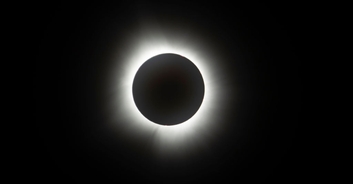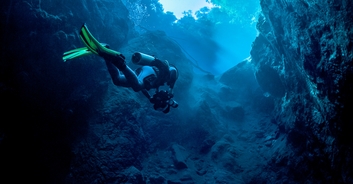Around this time every year, a lot of kids - and maybe even a few hopeful adults - turn their gaze to the sky in the hopes of catching a glimpse of Santa Claus and his magic reindeer. Unfortunately, it's unlikely that anyone will be lucky enough to see him; not because he's not real, of course, but because he's probably got some sort of sophisticated cloaking device for his sleigh.
(Come on, you know it makes sense. How else would he have got around undetected for so many years?)
Anyway, as disappointing as this may be, all is not lost, because those who look up to the night sky in the next couple of days might just be rewarded with something even better: a Christmas comet.

The comet, which has the snappy name, 46P/Wirtanen, orbits the sun once every 5.4 years, and passes by Earth on its journey. This time around, its visit coincides with the Christmas season, and stargazers will be able to spot it with a pair of binoculars or a telescope if they're in the right place.
Despite its fairly frequent visits past Earth, doesn't normally get so close to our humble little home planet, so it's a real treat to be able to see it this year. In fact, it hasn't come this close in 70 years, making it a genuine once-in-a-lifetime Christmas gift from the universe.
Even so, it's still quite far away - 11.6 million kilometres, to be precise. That's 30 times the distance between the Earth and the Moon, so there's no danger of it crash landing down anyone's chimney on its trip.

The comet was first discovered almost 71 years ago in January 1948 by Carl Wirtanen, an American astronomer.
As the comet's tail points away from Earth, it won't be fully visible for much of its journey. However, tonight (December 13th) and tomorrow, "There is a possibility of observing a dust tail or trail around December 14 when the Earth crosses the orbital plane of the comet and we see the enhanced dust tail edge-on," according to the website, Southern Comets.
To get the best view of the comet, you'll have to wait until December 17th, as that's when it'll be closest to the Earth. There's a small chance that it'll be bright enough to see with the naked eye (about the same as a faint star), but it's best to get yourself some specialist equipment just in case.

If you are lucky enough to catch a glimpse of 46P/Wirtanen, you'll notice that it's a brilliant, Christmassy green colour.
Here's a handy tool to help you find out where the comet will be at certain times, and when would be best for you to try and spot it in the sky.
And, while you're looking up there, keep an eye out for a jolly fat man in a red suit - and make sure you give him a wave! You never know, he might give you an extra little something on Christmas morning.












